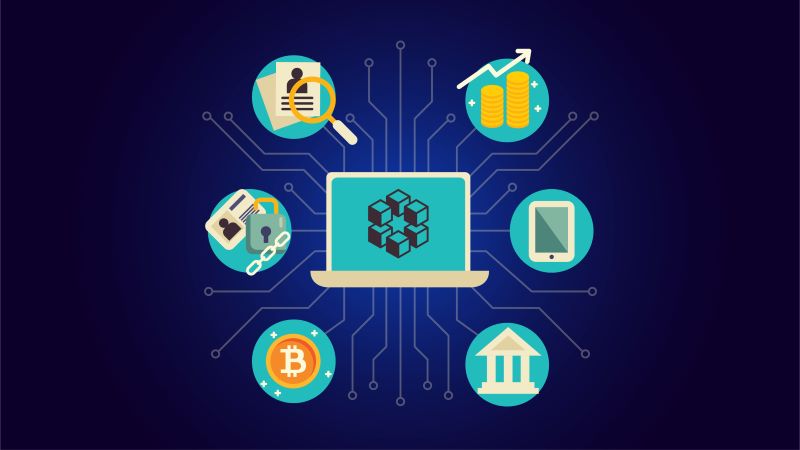What if the key to revolutionizing industries lies in understanding “Blockchain Technology meaning“? This transformative force is not just about cryptocurrency; it’s reshaping how we think about security, transparency, and decentralization. Join us on a journey to uncover the secrets of blockchain and its far-reaching impact on technology and business!
Outstanding Features of Blockchain Technology
Blockchain technology meaning shows some outstanding features of this technology as follows:
- Transparency and Immutability: Blockchain creates a public, distributed ledger where every transaction is recorded transparently and cannot be altered after confirmation. This enhances trust and security.
- Decentralization: Data on a blockchain is distributed across multiple nodes in a network, making it independent of a single central authority. This reduces the risk of data loss and enhances security.
- High Security: Blockchain transactions are protected by strong encryption and consensus mechanisms, preventing fraud and unauthorized access.
- Automation through Smart Contracts: Blockchain technology meaning allows for the deployment of smart contracts, self-executing programs when conditions are met, automating many processes and reducing human intervention.
- Scalability: Blockchain can scale to handle large volumes of transactions and data, serving increasingly complex applications and systems.
- Traceability: Each transaction in a blockchain is recorded and can be traced back to its origin, ensuring data accuracy and provenance.

Important Roles of Blockchain
Blockchain plays a crucial role in various fields due to its remarkable features:
- Security and Data Integrity: Blockchain provides robust security through encryption and consensus mechanisms, preventing fraud and data alteration. This is particularly important in applications requiring high trust, such as financial systems and supply chain management.
- Transparency and Auditability: Blockchain technology meaning creates a public, immutable ledger where all transactions are recorded and can be audited. This enhances transparency and facilitates tracking of activities, from asset management to product origin tracking.
- Automation through Smart Contracts: Smart contracts on blockchain allow agreements to be executed automatically when conditions are met. This reduces human intervention, saves time, and reduces risks.
- Identity Management and Verification: Blockchain can be used to create secure and decentralized identity verification systems. This empowers users to control their personal data and reduces the risk of data breaches.
- Supply Chain Efficiency: Blockchain enables tracking and recording each step in the supply chain, from production to distribution. This reduces fraud, improves transparency, and enhances product traceability.
- Creation of Decentralized Finance (DeFi): Blockchain technology meaning underpins decentralized financial services, such as lending, exchanging, and investing, without the need for traditional financial intermediaries. This expands financial access and reduces transaction costs.
- Interoperability and Integration: Blockchain supports integration and interaction between different systems and applications, enabling the creation of new and innovative solutions in various fields, from healthcare to e-government.

These significant roles demonstrate that blockchain is not only a groundbreaking technology but also a powerful tool for addressing many challenges in the modern world.
Future Challenges of Blockchain
While Blockchain technology meaning offers many potential benefits, it also faces several significant challenges in the future.
- Scalability: Existing blockchains struggle to process a large volume of transactions simultaneously without compromising performance. This can lead to slow processing speeds and high transaction fees, especially in large networks like Bitcoin and Ethereum.
- Energy Consumption: Consensus mechanisms like Proof of Work (PoW) require a significant amount of energy to mine and maintain the network. This raises concerns about environmental impact and high energy costs.
- Interoperability: While many different blockchains are operating, interacting and exchanging data between chains remains a challenge. The lack of interoperability can limit the development of decentralized applications (dApps) and cross-chain solutions.
- Security and Privacy: Although blockchain is considered secure due to encryption and consensus mechanisms, security vulnerabilities and cyberattacks can still occur. Additionally, storing data on a blockchain can raise privacy concerns and the potential for accessing personal data.
- Regulatory and Governance: Blockchain technology meaning operates in an evolving legal environment. Regulations and policies related to blockchain and cryptocurrencies are still developing, making it difficult for organizations to comply and regulate their operations.
- Adoption and Acceptance: Integrating blockchain into existing systems and convincing users, businesses, and organizations to adopt this new technology can face resistance or difficulties.
- Cost and Complexity of Deployment: Deploying and maintaining blockchain solutions can be costly and complex, especially for small organizations or applications requiring advanced features.
- Talent and Skills: Blockchain technology meaning requires specialized knowledge and technical skills. A shortage of experienced professionals can slow down the development and adoption of the technology.

Unveiling the secrets of blockchain technology meaning reveals a transformative force poised to redefine various aspects of our digital landscape. By understanding the core principles and potential applications of blockchain, we gain insight into how this technology fosters transparency, security, and efficiency across a multitude of sectors.
As we continue to explore and innovate within the realm of blockchain, Blockchain Global Network believes it becomes increasingly clear that its impact extends far beyond cryptocurrencies, shaping the future of data management, decentralized systems, and digital trust.

RELATED POSTS
What can you get with leetcoins? Discover now!
What can you get with...
Sonic SVM Airdrop: Eligibility, Timeline, and How to Get Involved
The Sonic SVM Airdrop presents...
Blockchain Crypto Technology – Transforming Traditional Finance with Decentralization
Curious about how Blockchain Crypto...
U2U KuCoin Listing – A new investment opportunity for the Crypto community
U2U Network (U2U) was officially...
Essential Blockchain Technology Example Cases You Should Know
Blockchain technology example is everywhere,...
What is Dapp? The future of U2U decentralized applications
Are you ready to explore...
Bitcoin Golden Cross – Strategic Investment Solution
The Bitcoin Golden Cross is not...
Exploring the Use of blockchain technology in different sectors
The use of blockchain technology...
What is a smart contract and how does it work
Imagine a vending machine. You...
Nick Neuman Crypto: A pioneer in Cryptocurrency security
Join me as we explore...
Blockchain Revolution: Safekeeping Educational Data in the Digital Age
Embrace blockchain's impact on educational...
Gradient Network Airdrop – How to Earn Points and Receive Rewards
Are you ready to dive...
ChillGuy Airdrop – A Golden Crypto Opportunity from TikTok Effects
The ChillGuy Airdrop is an...
Blocksense Network Airdrop – Hunt for Airdrop Tokens Ahead of Mainnet 2025
The Blocksense Network airdrop is...
The Tokenomics of U2U Network – Sustainable Value for Users and Investors
The Tokenomics of U2U Network...
Wormhole Airdrop – Take Advantage of 3 Valuable Investment Opportunities
Wormhole Airdrop is not only...